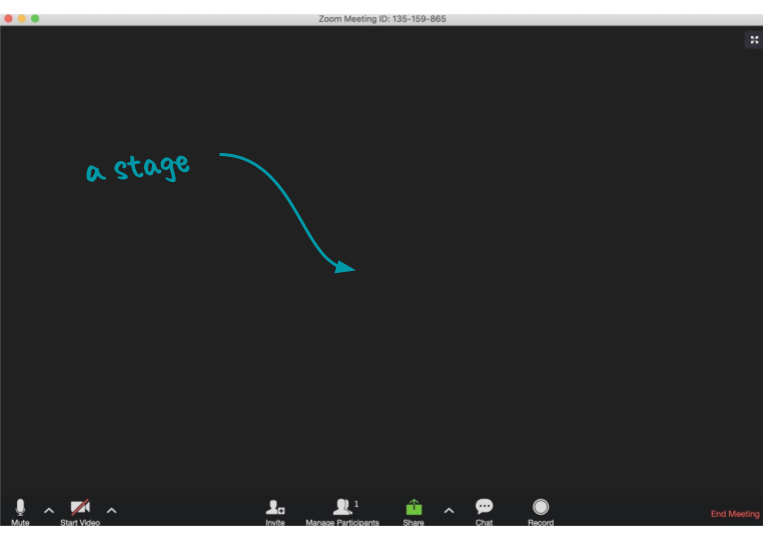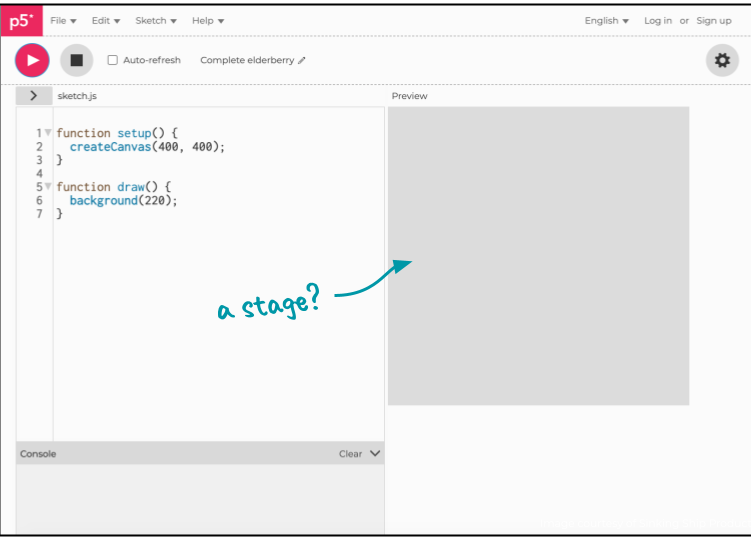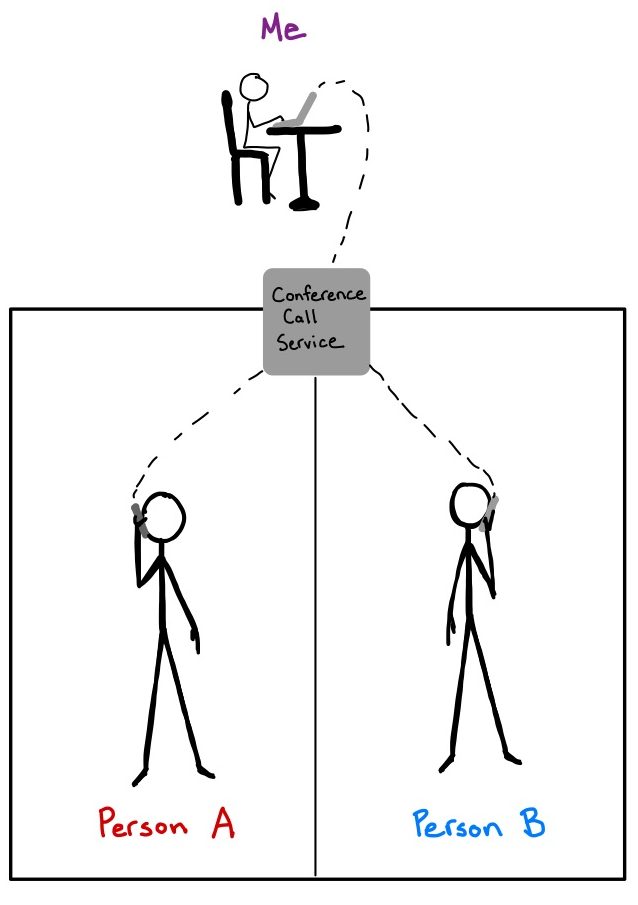“I can take any empty space and call it a bare stage.”
Peter Brook, The Empty Space


Interactive media has been influencing the world of live performance for decades. The COVID-19 pandemic has forced performers, who may have never before considered the internet as a site of theater-making, to adapt their work quickly to online platforms. Remote computational tools present entirely new opportunities for human expression. Rather than trying to recreate an in-person experience for a remote audience, those who create experiential art––either live or asynchronous––must take into account the nature and intrinsic logic of these tools in order for their work to be both necessary and successful.
My thesis is both a series of remote performances and an analysis of remote performance making, both in the physical world and online. It proposes a catalogue of tools and works, as well as a statement of principles, on which to build performances/time-based experiences/experiential art for audiences and performers that aren’t entirely in-person.

p5 Puppetry
QUESTION: What is the minimum needed for an audience feel empathy towards a subject?
Using the visual coding language p5, I made an interactive web animation using simple geometric shapes and attempted give them character and tp tell a story. In the recording below, I am controlling the circle with my mouse, and the moving line is programmed to do so automatically.
Tools Used: p5.js, a MacBook Pro trackpad, Quicktime Screen Recording for documentation
Keywords: abstraction, JavaScript, browser-based, creative coding, mouse interaction, puppetry, storytelling, characterization
Thank You For Being Present
QUESTION: Can total strangers make an emotional and bodily connection over the phone?

I arranged for two people to call a free conference call service at the same time. Unbeknownst to them, I was muted in the background on my computer, cueing audio prompts that guided them through a series of questions, leading up to simple physical instructions that got them mirroring each other. In order to preserve the intimacy and integrity of the experience, I didn’t record any of the interactions. If you would like to experience this piece, please feel free to email me at mary dot notari at gmail dot com. I plan to continue with further iterations.
Tool Used: freeconferencecall.com, naturalreaders.com, VLC, Quicktime Audio Recording
Keywords: phone, accessible, hearing, guided experience, participatory, empathy, intimate
dis/placed
QUESTION: How can two performers be in the same room while on different continents?

Through a virtual residency by elektron.art, I was able to participate an international collaboration with two dancers, one in LA (Rourou Ye) and the other in Amsterdam (Avan Omar). Inspired by our shared isolation, we devoted ourselves to finding a way to stage a performance that would look and feel like we were in the same room. We set up a projector in Avan’s Amsterdam apartment to project Rourou’s live feed from LA onto her wall and we streamed it live through zoom. Our audience reported having a hard time distinguishing what was “real” or not. The dancers even said they could practically feel each other’s embrace.
Tools Used: Zoom, OBS, WebRTC, a projector, 2 laptops, 1 PC, 3 smart phones with front-facing cameras
Keywords: peer-to-peer, video chat, real-time communication, kinesthesia, dance, illusion, overlay, compositing, home, small spaces, video manipulation, projection mapping
Ghost in the Machine
QUESTION: Can a duet happen when one dancer isn’t present?
Even when there isn’t a pandemic, many factors prevent performers from being in the same space as each other. Political status, lack of funding, accessibility issues are just a few factors that hinder travel even in the best of circumstances. What other new experiences can be born out of necessity when participants can’t be together in person?
In collaboration with students from NYU Gallatin, Tisch Dance, and NYU Shanghai, we were forced to answer that question when one of our dancers in a pre-pandemic project got a gig that conflicted with our final performance.
In the video above, the projection is the recorded body data of our absent dancer, Brandon, represented by swarms of particles. Before he left for his paying gig, we recorded his part of the choreography using the skeleton and body point data generated by a Kinect v2 for Windows. Using Kinectron, a browser-based development platform created by ITP alum Lisa Jamhoury and professor Shawn Van Every, we drew p5 particles over Brandon’s skeleton data. A Kinect sensor is tracking Ingrid, the live dancer’s movements and her speed controls the diffusion of the particles: the faster she moves the more the particles resemble a human form. Brandon is made corporeal by Ingrid’s movements.
In this case, having one of our dancers absent actually added a dimension to the performance that literally wouldn’t be possible if they were both physically present. For one, we would never have even considered using recorded data if we could have both dancers present. The nature and visuals of the performance would have been completely different. And even if we had used two live dancers in different locations, the final product wouldn’t have had the added wrinkle of evoking a body from the past. Brandon’s body, in this case, was transported across space and time. Ingrid’s movements resurrected a Brandon that no longer exists.
Tools Used: Kinect, Kinectron, p5.js, short-throw projector, PC laptop
Keywords: body data, creative coding, dance, JSON, projection, live interaction, in-person, absence, presence

My experiments have clarified a few principles for making remote performance. I propose the following lessons in creating robust digital experiences.

- As Red Burns once pointed out, computational tools offer brand new opportunities for human expression in the same way the movie camera did in the early 20th century. The question we should ask is not only how we can use these tools, but also why and to what effect?

That “why” is answered in the nature of the tools themselves. The medium is just as important as the message and the platforms we use to create experiences will dictate how they are received. For example:
- A phone is portable and a voice in your ear is intimate.
- With Zoom, its low resolution actually makes compositing images and video more convincing.
- And sensors like a Kinect can carry a person’s movements across time.
Just as we consider the affordances of our tools, we must consider the effect those affordances have. Because perhaps it goes without saying but…

Even when we are sitting hunched over a computer, we are using our bodies. Our bodies as well as our minds govern how we experience and conceptualize the world.

Teachers, UX designers, installation artists –– these lessons are for anyone who makes or curates experiences. Each medium and each discipline will have their own takes, but these principles remain the same.

The pandemic forced a lot of artists into remote performance. For many, it was a placeholder –– a way to broadcast or re-stage in-person work –– and there’s a sense that we’ll all just go back to the way things were as soon as possible. Trust: there will ALWAYS be a need for live, in-person performance – but this tech is not going to go away and in fact opened doors for a lot of people to make and experience performance who might not have otherwise been able to do so. My hope is that my work here shows that online tools are an opportunity – not a compromise, and that more and more people will join me in exploring this new, not-so-empty, space.
I am in the process of designing a wiki that anyone can contribute their remote performance work to or go to for inspiration. If you are interested in this project, I am actively looking for collaborators. Please feel free to email me: mary dot notari at gmail dot com.

Leave a Reply
You must be logged in to post a comment.